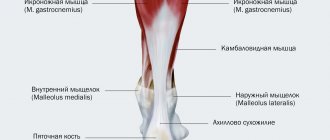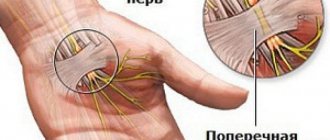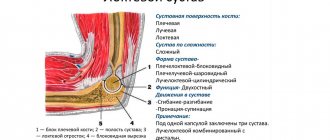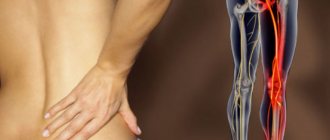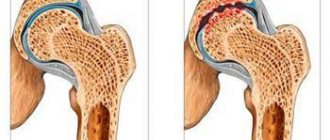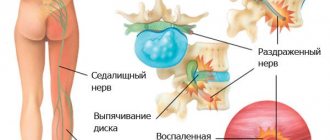How is bunion treated?
One of the most common and unpleasant pathological processes is bursitis. This disease develops against the background of regular injury to the joint and leads to the accumulation of fluid in the synovial bursa.
Symptoms of this disease include the following unpleasant manifestations:
- General weakness and malaise;
- Increased body temperature;
- Pain in the foot that gets worse when walking;
- Increased blood filling of blood vessels;
- Swelling in the joint area;
- Decreased physical activity.
That is, if a person feels pain in the foot when stepping on the foot or notes other symptoms indicated above, one can judge the presence of bursitis and the need for immediate treatment.
In most cases, to get rid of this disease, special medications are used, physiotherapeutic procedures or surgical operations are performed. Such measures are carried out with the aim of reducing pain in the foot, eliminating inflammatory foci in the periarticular bursa and improving regenerative processes in tissues.
However, shock wave therapy is considered the most effective and safe for the human body, which avoids surgical intervention and guarantees the patient a full recovery.
This technique uses sound waves of a certain frequency. With its help, it is possible to eliminate swelling in the shortest period, relieve pain in the foot when stepping, improve the functioning of the lymphatic system and remove unnecessary fluid from the body. The benefits of the procedure also include: strengthening the immune system, normalizing metabolic processes, tissue regeneration and eliminating the main cause of pathology – salt deposits. The effect of UVT can be felt immediately after the first session. At the same time, patients experience severe pain in the foot and swelling decreases.
However, the most effective result can be achieved with an integrated approach to the problem, if the effect of acoustic waves alternates with other therapeutic measures.
Plantar fasciitis: main signs and treatment procedures
Another ailment that causes pain in the feet is plantar fasciitis. This is an inflammatory process localized in the area of the ligament lining the inside of the plantar fossa. As a rule, this pathology occurs in overweight women, as well as in people with flat feet or involved in strenuous sports. One of the symptoms of this disease is sharp pain in the foot, which occurs when the load on the legs increases.
Also, characteristic signs of pathology include:
- The appearance of swelling in the plantar fascia;
- Pain in the foot when stepping on the foot in the morning and when playing sports;
- Discomfort in the heel after a long period of sitting or standing.
Today, several methods are known to eliminate plantar fasciitis. Firstly, experts recommend using special insoles that make walking easier. The use of night splints also gives good results. To stretch the muscles, it is advisable to resort to gymnastic exercises.
If the patient has a severe form of the disease, characterized by the presence of a heel spur, shock wave therapy helps achieve the desired effect. When exposed to sound waves of a certain frequency, growths are destroyed with simultaneous regeneration of nearby tissues.
Also, the positive aspects of this procedure include:
- Improving blood flow in capillaries, venules and arterioles;
- Restoration of metabolic processes in the sole area;
- Resorption of scars;
Relieving foot pain and eliminating inflammation.
Read more about plantar (plantar) fasciitis >>
Leg pain - what are the symptoms?
The outflow of blood from the lower extremities occurs through deep veins, which are located deep in the muscles, and subcutaneous veins, which pass through the subcutaneous fat. The superficial and deep venous systems of the legs are interconnected by connecting, or communicating, veins. There are valves in the veins of the lower extremities. They orient the blood flow strictly towards the heart. Valves located in the connecting veins allow blood to flow from the subcutaneous venous vessels to the deep ones and prevent its return. There are most venous valves on the lower leg and very few on the thigh.
Blood flows through the veins up to the heart, thanks to active contractions of the muscles of the foot, leg and thigh. The valves prevent the blood from returning. Other mechanisms (the energy of cardiac contraction, the suction effect of the chest when alternating inhalation and exhalation) are of auxiliary importance.
Why do your legs ache? The main reason for the development of chronic venous insufficiency and the appearance of constant heaviness in the legs is disruption of the normal functioning of the vein valves. The blood flow becomes chaotic, and the pressure in the saphenous veins increases so much that the walls of the vessel cannot stand it and begin to expand, like a balloon.
Damage to vein valves occurs due to:
- Prolonged stay in an upright position;
- Increased intra-abdominal pressure;
- Changes in hormonal levels in women;
- Pregnancy (due to pressure from the growing uterus on the veins of the abdominal cavity, which in turn complicates the outflow of blood from the legs).
A person develops heaviness in his legs and finds it difficult to walk after venous thrombosis, which almost completely destroys the valves in the affected vein. Microthrombi that damage venous valves sometimes occur as a result of household and sports injuries.
Features of eliminating flat feet
Flat feet is a pathology associated with flattening of the transverse and longitudinal arches of the foot, which negatively affects its shock-absorbing properties and increases the load on the spinal column and joints.
The following symptoms allow us to draw a conclusion about the presence of such a disease:
- Rapid wear of the inside of the shoe;
- The appearance of severe fatigue during long walks, working in a standing position, or wearing high-heeled shoes;
- The occurrence of pain in the lower extremities and lumbar spine;
- At the end of the working day, a person’s legs become very swollen and the sole of the foot hurts;
- The base of the thumb begins to protrude outward.
To eliminate the possibility of severe damage to the spine and prevent the need for surgery, it is better to consult a specialist in advance. Along with massage and wearing orthopedic shoes, a course of shockwave therapy provides excellent results.
Thanks to the effects of acoustic waves, the patient can count on a number of positive effects. These include:
- Elimination of pain;
- Strengthening the muscles and ligaments of the foot;
- Improving blood circulation in damaged tissues;
- Restoration of metabolic processes;
- Loosening of calcium deposits;
- Restoring mobility in the lower extremities.
Read more about treatment of flat feet in adults >>
Make an appointment Online booking
- Clinic on Krasnopresnenskaya +7 (499) 252-41-35 Volkov lane, 21
- Clinic on Varshavskaya +7 (499) 610-02-09 Varshavskoe highway, 75, building 1
- Clinic in Annino +7 (495) 388-08-08 Varshavskoe highway, 154, building 1
What is the disease ligamentitis?
This disease is inflammatory in nature and, as a rule, affects the upper and lower extremities. However, most often the feet are susceptible to this pathology, which is due to the increased risk of injury to them. In advanced forms of the disease, the ligaments lose their elasticity, and the patient experiences severe discomfort in the legs. His fingers go numb, and acute pain appears in his foot when walking, which requires immediate determination of the cause and the appointment of adequate treatment. In the chronic form, pulling and aching pain may occur in the feet.
For therapeutic purposes, an orthopedic surgeon can prescribe both conservative and surgical measures, depending on the severity of the pathology. In this case, anesthetic ointments are often used, electrophoresis is performed and paraffin applications are applied. Shock wave technique is also an effective procedure.
This therapy provides the following benefits:
- Blood supply to the affected area is normalized;
- The elasticity of the ligaments is restored;
- Pain syndrome is eliminated;
- A long-term positive effect is achieved;
The procedure is considered to be as painless, fast and safe for the patient as possible.
Symptoms
Usually a person not only has pain on the top or bottom of his foot, but also exhibits additional symptoms. The list of symptoms depends on the specific disease. The following symptoms may accompany pain:
- Heaviness in the legs.
- Rapid fatigue of the limbs.
- Swelling.
- Redness of the skin.
- Formation of wounds and bruises.
- Numbness of the cover.
- Limited movement.
If pain occurs frequently and other symptoms appear, you should definitely visit a doctor and find out the cause of the disease, and not try to get rid of the pain with analgesics.
Ways to combat osteoporosis
As you know, osteoporosis occurs due to a lack of calcium in the body. As a result, bones lose their natural strength and become susceptible to excessive stress and injury. This contributes to the development of destructive processes; a person’s feet hurt for no apparent reason, swelling and redness of the lower extremities are observed, and other signs of calcium deficiency also make themselves felt. As a rule, this disease affects men and women over the age of 55 years.
Therapeutic measures prescribed to combat pathology are aimed primarily at eliminating pain. In this case, the emphasis is on the use of analgesics, calcium-containing drugs and bisphosphonates. It is also important to change your diet in favor of taking foods that contain calcium and performing a massage.
The SWT procedure prescribed for osteoporosis deserves special attention. During it, a special apparatus is used that generates sound waves of a certain frequency. The positive effects of the technique include:
- Removal of calcium deposits that accumulate in ligaments;
- Improving blood flow in affected areas;
- Restoring the healthy state of cartilage and bone tissue;
- Spasms and pain that arise in the foot for no particular reason go away;
- Restoration of the body at the cellular level;
- Inflammation is eliminated;
- Swelling decreases;
- Metabolic processes in the muscles located at the site of injury are enhanced.
1.Pain in legs
Almost all people at some point in time experience problems with their legs - pain in the legs, pain in the feet, toes, ankles and other unpleasant sensations.
Why is this happening? In fact, there can be many reasons. Most of the time, our body movements do not cause any problems. But due to daily or too intense stress, a variety of leg diseases can develop. In addition, injuries and the natural aging process can cause discomfort and pain in the legs.
Your toes, feet, and ankles may experience burning, pain, fatigue, numbness, tingling, warmth, or coldness
.
muscle spasms
occur in the legs, especially at night when you sleep, and swelling of the legs.
The feet and ankles may become discolored, pale, or blue
.
There may be an unpleasant odor from your feet
.
Some of these symptoms are normal for older people or pregnant women. In this case, treatment at home is usually sufficient. In other situations, you need to find the cause of the problem and treat it.
Bemer therapy is a modern way to combat all types of pain. You can read more about Swiss physiotherapy in this section
Sign up for a consultation
A must read! Help with treatment and hospitalization!
What measures should be taken if ligaments are damaged?
Sprained ligaments are considered a fairly common problem, as they can be caused by daily household injuries and sports activities. This process can be accompanied by multiple ruptures of ligaments and individual fibers. The main danger of the disease is the development of serious inflammatory processes.
In this case, the patient most often asks the following questions: “The foot hurts when walking: how to treat?”, or “The leg hurts in the foot area: what to do?”. He may also be concerned about bruising and swelling in the lower extremities. Often a person notes a feeling of loss of control in the foot and some stiffness during movement.
To relieve acute pain, it is recommended to use an elastic bandage and take non-steroidal anti-inflammatory drugs. Physiotherapeutic methods are also considered effective: ankle massage and warming up. In the event of a ligament rupture, surgery must be performed urgently. The latest technique, shock wave therapy, allows one to avoid surgical treatment for severe injuries. With its help, it is possible to accelerate collagen synthesis, relieve inflammation, eliminate pain and restore the necessary mobility of the ankle joint.
Read more about the treatment of ankle sprains >>
Arthritis of the foot: which treatment method is most effective?
A characteristic sign of such a pathological process is swelling in the joint area, which is accompanied by severe pain, increased temperature in the limb area, the appearance of inflammation and stiffness when walking.
If a person has pain in the joints of his feet, but does not see a doctor for a long time, this is fraught with increased discomfort, even leading to lameness when moving. In addition, cartilage and soft tissues are subject to total destructive processes, and wounds appear near the joint.
When pain appears in the feet, its causes are initially identified and, if the disease is confirmed, treatment is prescribed aimed at restoring the affected joint. At the same time, the UVT procedure is considered especially effective and safe for the human body. Its positive effect on the sore spot is as follows: tissue blood clots and salt crystals are crushed, blood flow is significantly improved, and cell activity is restored. This helps to quickly eliminate pain, allows you to restore flexibility to the joint and improves its endurance under increased loads.
Possible reasons
The foot is the lowest section of the lower girdle of the limbs (legs). Consists of 26 bones, the foot contains many nerve endings and blood vessels. The bottom of the foot is called the sole and is wrinkled and has no hair on the surface.
As already mentioned, patients often complain to doctors about foot pain. In different cases, the pain is of a different nature. It can be acute (occurs suddenly and is severe) or chronic (not very intense, but constantly bothers you). As for the nature of the pain, in most situations it is diffuse - a type of pain when the discomfort is first concentrated in one point and then spreads over a larger area.
Pain in the middle of the foot can have many causes. Here are the most common:
Advertising:
| Violation | Description of the violation |
| Plantar fasciosis | The right and left soles have fascia - these are strips of connective tissue that stretch along the entire surface of the foot. With fasciosis, this structural element becomes inflamed. The cause of inflammation is most often foot injuries. With fasciosis, the pain bothers you in the morning, when a person has just woken up and got to his feet. The symptom manifests itself acutely (a feeling as if the entire arch of the foot is on fire), but during the day it may subside and appear again. While walking, pushing your heel off the floor, the discomfort worsens. As for the nature of the pain, it is usually nagging. Another symptom of fasciosis is redness and local swelling (these symptoms may also indicate a fascial rupture). |
| Heel spur | In medicine, this disorder is called plantar fasciosis. In most cases, heel spurs are localized at the edge of the heel or under it on the plantar side, which is why the entire arch of the foot begins to hurt. The pathological process begins with inflammation of connective tissues. At first, the bump looks like an internal pimple. It forms into a lump, the skin above it begins to turn red. As inflammation develops, the spur grows and begins to deform bones and soft tissues. |
| Finger deformity | Deformation of the metatarsal bones (formation of hammertoes, hooktoes) is one of the reasons why the arch of the sole may hurt, because the displacement disrupts the bone structure of the arch of the foot. Such a violation may lead to more global deformations. When the toes are deformed, pain in the arch of the foot can manifest itself in a state of activity and rest. With this disorder, it is painful for the patient to walk, the patient suffers from a feeling of squeezing and twisting. |
| Nerve and blood vessel disorders | Due to other underlying disorders, blood vessels and nerves in the foot area may become pinched. Pinching can cause pain or other more serious problems. |
| Flat feet | Foot deformity is a common cause of pain, since this disorder involves the articular and bone axis. Flat feet can be congenital, or appear as a result of injury or pregnancy. This disorder also often occurs in the elderly. In addition to pain with flat feet, the patient suffers from rapid fatigue of the legs, swelling, and cramps. This is a very dangerous sore, as it can involve the entire musculoskeletal system in the pathological process. |
| Diseases of the musculoskeletal system | The following violations fall into this category:
With diseases of the musculoskeletal system, a person may feel acute or chronic pain during movements and at rest, swelling, frequent cramps, stiffness in movements, and cracking in the joints. Some patients may have joint deformities, which often makes movement difficult. |
Also, the result of pain in the middle of the foot can be excessive body weight and a violation of the integrity of the bones of the foot. A very common cause of pain in the middle of the sole is the wrong choice of shoes. This is especially true for women's feet, when girls often wear heels and sacrifice comfort for the sake of beauty.
Advertising:
Whatever the cause of pain in the arch of the foot, do not delay and consult a doctor (depending on the type of disorder, this may be a vertebrologist, surgeon, traumatologist, rheumatologist or neurologist).
In such cases, pain may appear both while wearing uncomfortable shoes and after removing them. The legs hurt, go numb, swell, itch and feel very heavy.
When a burn occurs, whether chemical or thermal, the victim experiences first acute and then long-lasting pain. To aid healing and pain relief, it is worth looking for effective burn remedies that have an analgesic effect. Read more in the article: “what helps with burns, which ointments are better.”
Arthrosis of the foot: treatment methods
Arthrosis of the foot is characterized by deep degenerative-dystrophic processes in the joint area. Moreover, if a patient has pain in the bones of the foot, and doctors diagnose arthrosis, this pathology is difficult to treat. This is associated not only with massive destruction of the joint, but also with severe inflammation of the tissues located near it, as well as deterioration of blood circulation.
Arthrosis can be triggered by genetic causes, obesity, wearing tight shoes, excessive stress on the lower extremities, abuse of alcoholic beverages and tobacco products, poor diet, etc.
In this case, the patient notes the following unpleasant phenomena:
- Pain that intensifies with increasing physical activity. Initially, the foot hurts slightly and with a certain frequency, then an increase in discomfort is observed;
- Limitation of foot mobility;
- Joint deformity;
- Redness of the skin in the joint area and the appearance of swelling;
- Change in gait, appearance of lameness.
When treating this disease, an integrated approach is used, as in the fight against other similar problems. Typically, the patient is referred to physiotherapeutic procedures, which include magnetic resonance therapy, laser techniques, electrophoresis, mud therapy and UHF. Massage, physical therapy and changing your diet can also help you get a good effect.
However, the most effective methods include exposure to low-frequency sound waves. This helps to improve blood supply to tissues and activate regenerative processes in them, as well as revitalize cells. Moreover, UVT provides a powerful anti-edematous and anti-inflammatory effect on the body. If for any reason your foot hurts, you can get high-quality treatment with a guarantee of results at the medical center. The shock wave therapy procedure is carried out using the latest Swiss equipment with the participation of competent specialists with extensive experience.
Read more about the treatment of arthrosis of the foot >>
Diagnostic measures
To determine the cause of the pain, the doctor prescribes a series of tests. First of all, the doctor examines the foot. Already by external signs one can suspect the presence of certain diseases or injuries of the metatarsus and other parts of the foot. The doctor then sends the patient for an examination, which may include the following:
- Radiography.
- Ultrasonography.
- Computed and magnetic resonance imaging.
- Angiography of blood vessels.
- Laboratory analysis of blood and urine.
Based on the diagnostic results obtained, the doctor selects treatment tactics.
Sore feet: what to do and how to treat the disease?
So, in the initial section of this article, we indicated how important the role the foot plays in a person’s life. It performs supporting functions, facilitates walking and promotes shock absorption. However, with weight gain, excessive sports activity, prolonged standing, poor lifestyle, hereditary factors and the presence of any diseases, this part of the body may fail. The first and obvious sign of a disorder is the appearance of pain. It is not recommended to ignore such alarming signals from the body, as this can lead to the development of serious pathologies in the musculoskeletal system.
Many people are interested in: “If your foot hurts, which doctor should you see? Who can provide proper assistance? As a rule, physiotherapists deal with such ailments. It doesn’t matter whether the arch of your foot hurts on the inside or the ball of your foot hurts, a professional specialist will conduct an initial diagnosis and determine the exact causes of the pathology. To get a clear picture of the disease, the doctor will refer you for a urine and blood test, and also ask you to do an X-ray, MRI and CT scan.
Once the doctor finds out the reasons why the feet hurt, he will be able to choose the right treatment . As stated earlier, a positive result can only be obtained with an integrated approach to the problem. That is, you may be prescribed not only medications, but also physiotherapeutic procedures, physical therapy and wearing orthopedic insoles. The effectiveness of these techniques can be significantly increased through the use of shock wave therapy, which we described in detail in this article. In difficult situations, it is advisable to resort to surgical intervention.
However, the likelihood of a full recovery largely depends on the person himself and his desire to follow simple preventive measures. These include:
- The need to use only high-quality, soft and comfortable shoes that fit perfectly on the foot;
- Perform self-massage of your feet regularly. This will restore blood circulation in the lower extremities and relieve muscle tension;
- Do sports exercises. These include: daily walks, cycling, swimming and running;
- Maintain a normal weight and follow healthy eating principles. With obesity, the musculoskeletal system is primarily affected.
Diagnostics
Only a qualified specialist can correctly diagnose and prescribe treatment, therefore, if your foot hurts on the side of the foot, you should definitely consult a doctor. Of course, there can be many reasons for pain, even simple fatigue. But it is necessary to exclude a serious pathology. Usually, at the first appointment, the doctor examines the patient, asks questions about his well-being, whether there have been any injuries recently, where the person works and how he lives. Heredity plays an important role in diagnosis, so it is worth remembering whether relatives had the diseases described above. Based on the examination and questioning, the doctor can immediately make a preliminary diagnosis and prescribe the patient to take painkillers; the person is also sent to undergo a series of studies to discover the exact cause of the disease and confirm the diagnosis. As a rule, the patient is prescribed an ultrasound and x-ray of the foot, this is usually enough to see the problem. Other tests may be prescribed at the discretion of the doctor.
